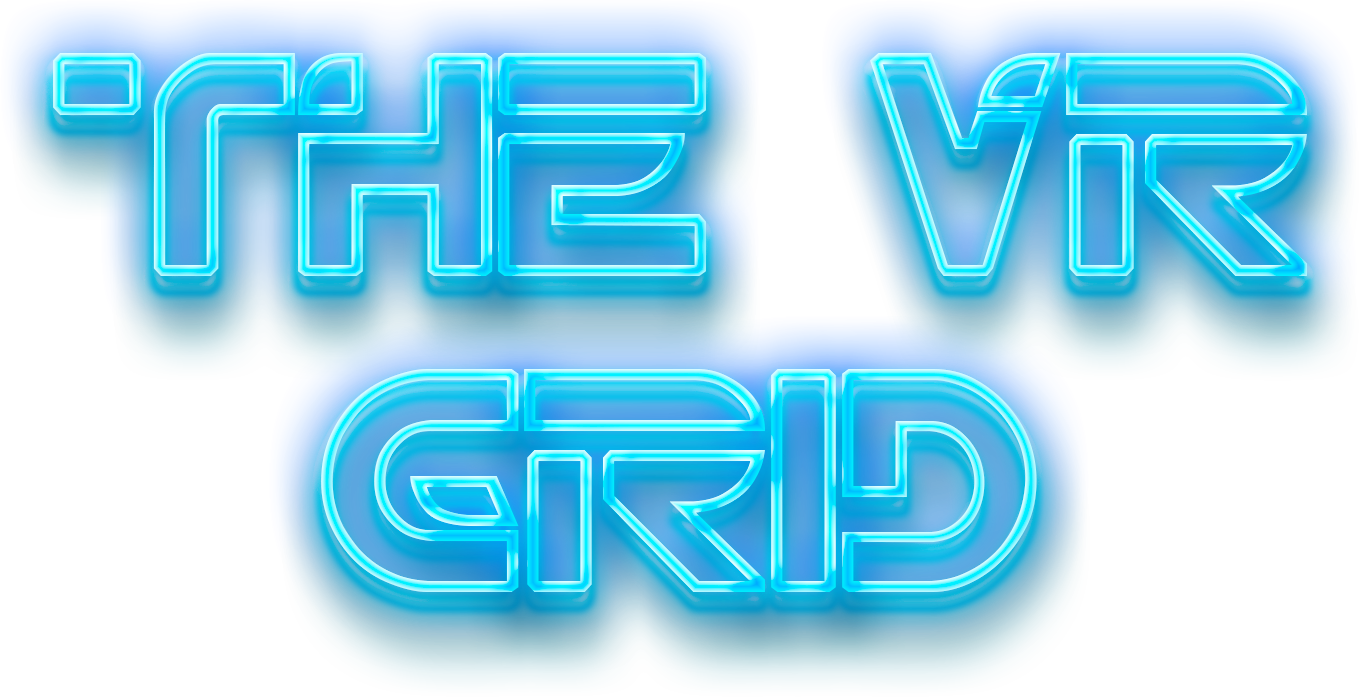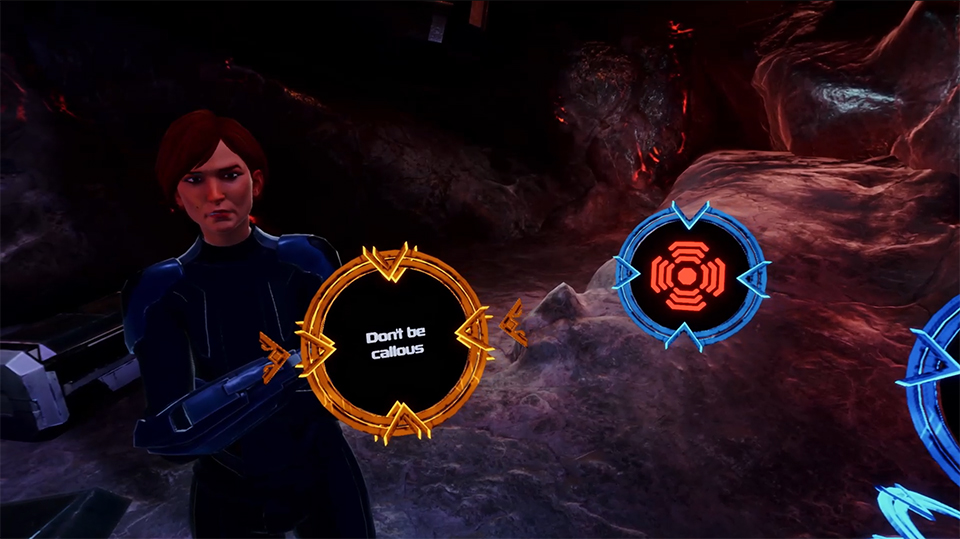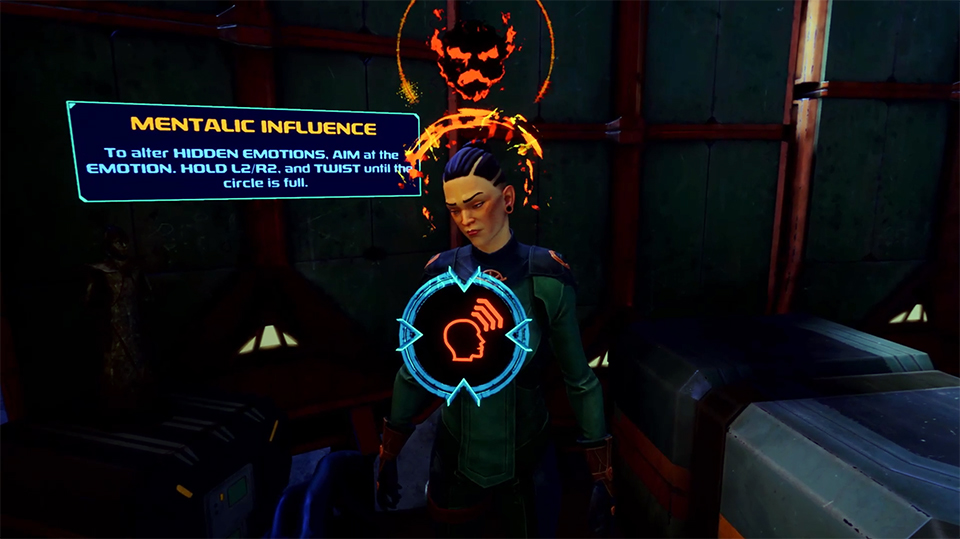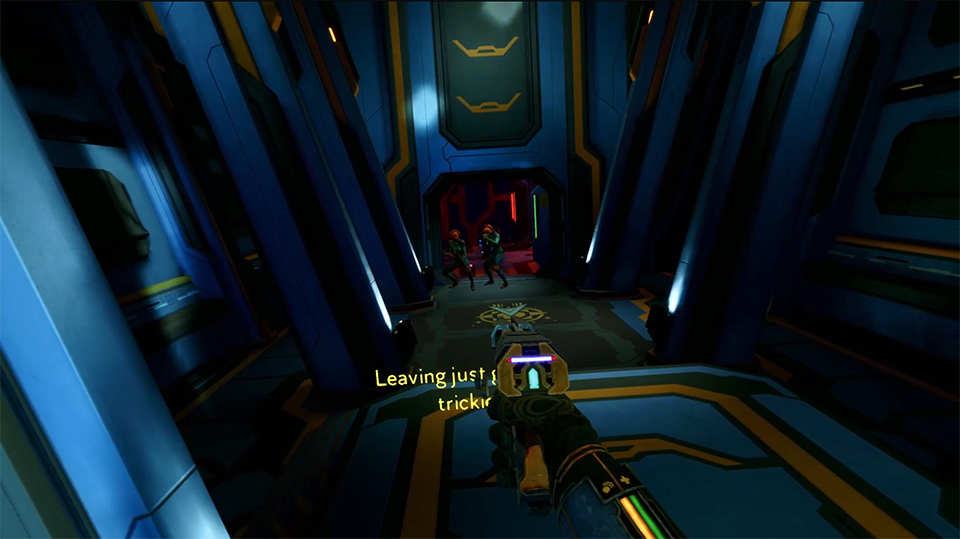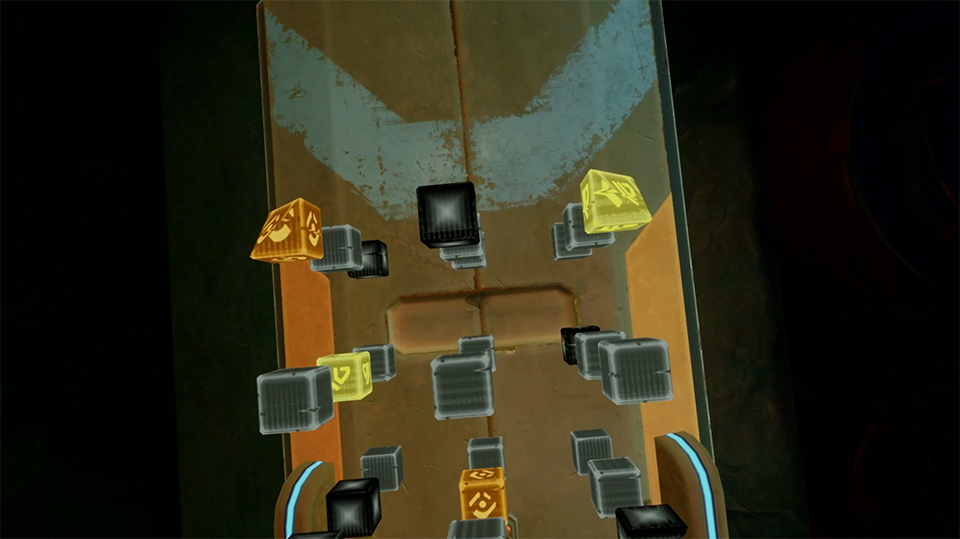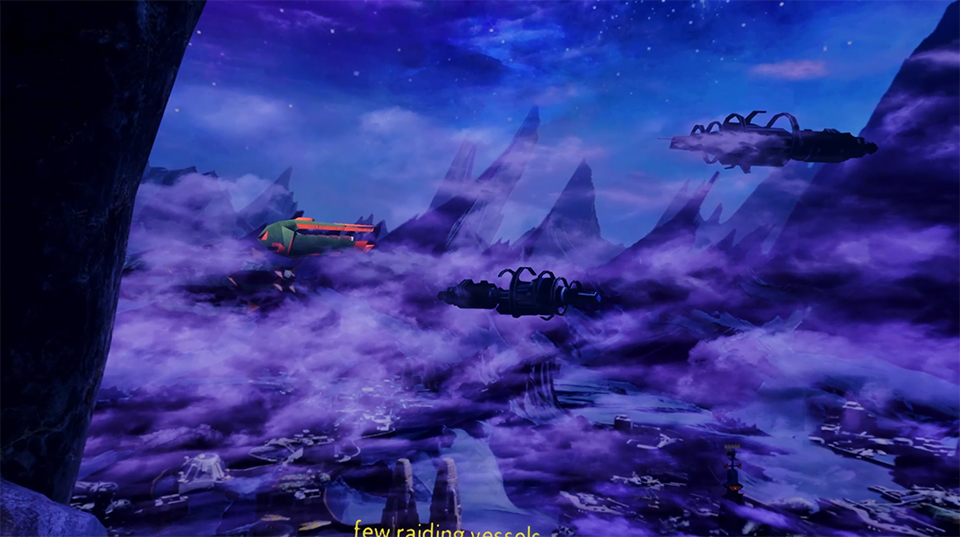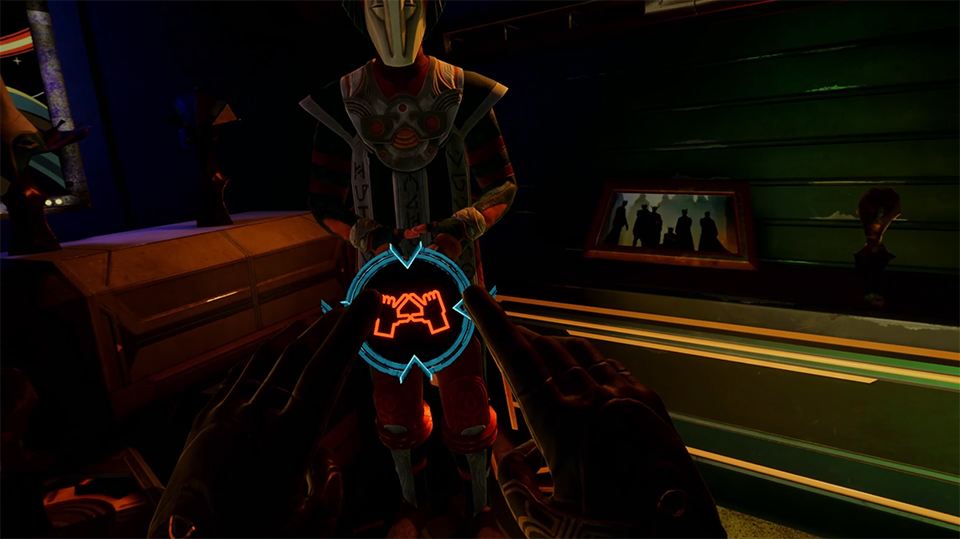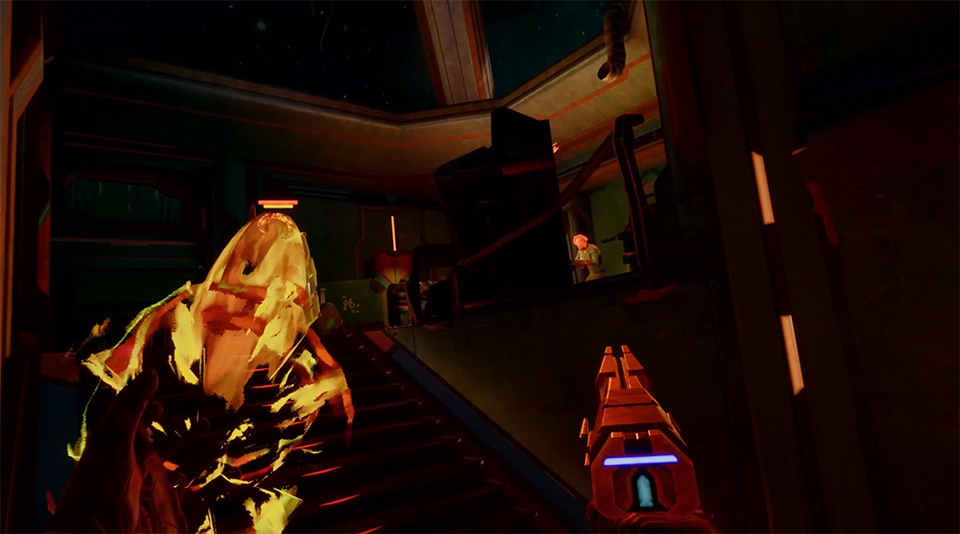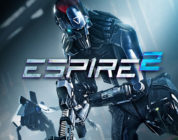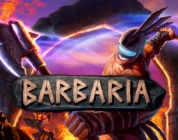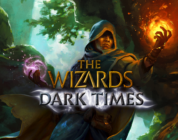Developer / Publisher – Archiact Interactive
Price – US $39.99 / CAN 54.99 / EU €39.99 / UK £29.99
Release Date – October 26th, 2023
Input – 2 x Motion Controllers
Play Area – Seated, Standing
Store Links – PlayStation, Meta, Pico
Reviewed on – PSVR 2
I’m not familiar with the source Material for Journey to Foundation, but I do loves me some epic sci-fi stories which is clearly what this game is looking to give players. You play as agent Ward, a woman who works for the Commission of Public Safety, a branch of the Galactic Empire that maintains order by seemingly any means. The game opens up with a simple mission involving a few deserters from the Empire, but soon turns into a larger conspiracy that could change the fate of the empire.
The games’ onset will have you familiarize yourself with the controls and included are comfort options that allow for full freedom of movement to click-turning and teleportation and various levels of blinders. After this simulation, the 1st stage introduces the current political climate as well as combat and communication, the latter of which is paramount in how you’re going to enjoy this game.
Once chatting someone up, talking points will appear that can be abrasive or kind with optional dialogue choices also popping up that could help you learn more about who you chatting with, someone else or some general information about what’s happening around you. Without spoiling the story, you will end up playing a pivotal role in it that will depend on many of your choices…whether you like it or not.
It’s not a great system as you need to look at the choice before pressing ‘X’ to select it, but on more than a few occasions, the game picked a choice I didn’t mean too. Most of the time, that was fine as you can repeat many conversations and pick all the options to see how people may react differently or get additional info, but it’s still annoying to repeat conversations nonetheless. Adding to those simple choices is the ability to read minds and persuade people to change how they’ll react to questions, which is awesome in theory as I initially felt like Obi-wan Kenobi telling storm troopers “you don’t need to see our identification”. In practice though, these bits are rarely optional and need to be used to move the story along, adding a layer to talking that felt more contrived than fun. You can also look at “stuff” in the environment to help trigger a response so pay attention to your surroundings as they can be easy to miss, though an icon will pop up in your speech options to remind you it’s there. What this all makes for is a somewhat clunky conversation experience that is fine when it flows but annoyed me when I was forced to do something to trigger the right talking point.
Unfortunately, Journey to Foundation has chosen to include many different mechanics like shooting combat, hacking of storage containers using a relatively simple cube puzzle that just gets more complex, but not necessarily harder, the further you get in the game, climbing sections, finding hidden items and a host more ways to interact with the various environments you find yourself in that feel at best half baked and at worst simply there to pad the run time. Speaking of running, you can’t, and are relegated to a slow walk which in most situations is fine, but when backtracking or in in a situation that might call for some quicker feet, agent Ward always goes at her own, slow pace. Now let me be clear, none of the gameplay elements are broken in here, they just tend to feel more formulaic and redundant than engaging and fun which had my initial few hours in the game feeling like quite the chore.
Now, this is where the story kicks in as while it is initially not very engaging, at least it wasn’t for me, once I started to remember who was who and paid attention to the politics at play, did I start to feel invested in the story. In between stages, you can view a sort of encyclopedia which covers important planets, characters, technology and other info found in conversation or from little data cubes which contain audio recordings or snippets of text. That narrative really is the driving force behind my investment in this as once things started to pick up, it did ease some of my annoyances with all the ways the game tries to slow that story down in favor of just seeing what was going to happen next.
Circling back to the combat, you are armed with a singular weapon that has additional mods that change it up from being a pistol, a machine gun, shotgun and rifle. Enemies are bullet sponges or the weapons are weak AF, it doesn’t really matter as your shots move just slow enough to make hitting moving targets a struggle and as there is no ammo to be found, overusing your weapon will force it to cool down for a few seconds. The combat feels very similar to Hubris with the exception that enemies rarely miss if you are exposed so you need to take them out quickly and let your health regenerate while hiding behind cover. You’ll also gain the ability to use your mind messing powers to stun or even kill singular foes though this will need to be used sparingly as your mental powers are also tied to a meter on your dominant hand that slowly replenishes when not being used. There is no level up system in here, the story will simply dictate when a new ability or weapon mod becomes available.
Something I did enjoy, despite it being a little janky, is the need to make hand symbols and arm gestures as you meet certain people. The first time this happened was when I was being detained until my ID was verified and the solider in charge told me to put my hands up. I did, but clearly didn’t do it high enough as he threatened me once more to do it lest I face consequences. Once I raised my hands well above my head did the scene proceed and it’s little moments like that that remind me why playing in VR can be so special. Throughout the game some characters will greet you with gestures from whatever group they are affiliated with and repeating these successfully did seem to endear me to them or irritate them if I didn’t do them properly. This did get tricky when they wanted my fingers in a certain position as I had difficulty remembering which buttons did what and failed as those characters moved on, but it’s something I appreciated throughout the campaign whenever it showed up.
This leads me to the presentation which is a mixed bag of campy cartoonish fun not unlike the Saints and Sinners games or Vox Machinae with nearly everyone looking like they could easily belong in either of those titles. On the PSVR 2, there is some dynamic lighting at play which does help make things look a little immersive but on the flip side are some lower resolution backgrounds and textures which do stand out as looking particularly not good. This is readily apparent during the sections where you can see into space and ships are flying about as both don’t look great. The levels you find yourself in fare better, but in no way are they anything special and while the variety of locales you find yourself in is impressive, the small scale of every stage makes this universe feel smaller than it should. NPC’s can animate stiffly, many effects (like explosions or various weapons fire) just don’t look good and I can’t help but feel like having this release on the Quest & Pico platforms limited the scope of the stages and restricted the design choices to something that could run on the stand alone platform. Most of the game looks ‘just fine’ but anyone looking for their next Red Matter 2 or Hubris when it comes to visuals should check those expectations. I also did notice a slight Mura effect though it was fairly subtle and never became too distracting.
As this is a narrative heavy tale with a lot of talking, it’s great that everyone you talk to is fully voiced by a talented collection of actors that all do great work at nailing their respective characters. Sure, sometimes people can be a bit cheesy, or some replies sound forced, but overall I’m happy with the voice acting and dialogue as it did remind me of Bethesda classics in the Elder Scrolls and Fallout series of games. A fairly epic soundtrack is also at play, kicking in when the action gets intense, but falling into the background when things get a little quieter and when I did notice it, I appreciated its quality! Spatial audio is also in full effect here and I always love when turning my head away from someone causes me to hear them less or only in 1 ear. Of course, there’s more to that 3D audio than just that and when explosions and gunfire were happening around me, it can sound fairly intense.
PSVR 2 haptics are also fully utilized with each of your blaster shots feeling different and when you use your powers or health gets low, they’ll rumble in different ways.
Journey to Foundation I think is best described as a Jack of all trades, but master of none type experience that is saved by its story and how it potentially plays out during the 7-hour campaign. Key choices will have a dramatic effect on how it all plays out and you can skip through conversations should you decide to play a 2nd time to see what changes you can affect. Nothing in here is broken, it could just all use some fine tuning as, minus the telepathic powers, almost every other aspect of the game feels like it’s been done better somewhere else. It’s for that reason that I feel like the asking price is a little high for this but if you are looking to play a narrative heavy sci-fi adventure, I think Journey to Foundation should scratch that itch nicely…just give it a couple hours for the story to truly pull you in
Archiact Interactive provided The VR Grid with a press code for this title and, regardless of this review, we thank them for that!
